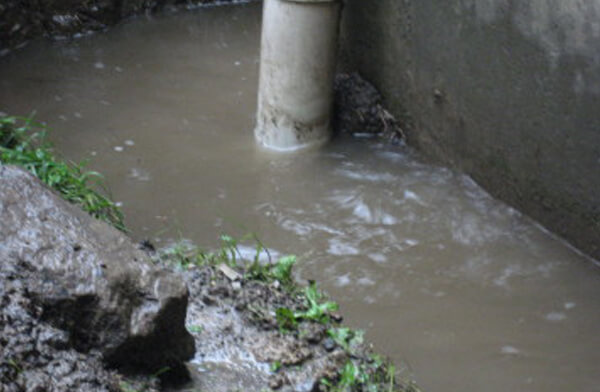Just how to Examine If Your House Has a Concealed Leak
Just how to Examine If Your House Has a Concealed Leak
Blog Article
We have stumbled on the article pertaining to Top leak detection hacks listed below on the net and figured it made sense to discuss it with you on my blog.

Early discovery of leaking water lines can alleviate a possible calamity. Some tiny water leakages may not be noticeable.
1. Examine the Water Meter
Every house has a water meter. Inspecting it is a guaranteed way that helps you uncover leaks. For starters, shut off all the water resources. Ensure nobody will purge, make use of the tap, shower, run the cleaning machine or dishwashing machine. From there, go to the meter and watch if it will certainly transform. Because no one is utilizing it, there need to be no motions. If it moves, that shows a fast-moving leakage. If you find no adjustments, wait a hr or two and examine back again. This implies you might have a sluggish leak that could even be underground.
2. Inspect Water Usage
If you identify sudden changes, in spite of your usage being the same, it implies that you have leakages in your plumbing system. An abrupt spike in your expense indicates a fast-moving leak.
A consistent rise every month, also with the same routines, shows you have a slow leak that's additionally slowly intensifying. Call a plumber to completely examine your home, particularly if you feel a warm area on your flooring with piping underneath.
3. Do a Food Coloring Test
When it involves water intake, 30% comes from commodes. Test to see if they are running properly. Drop specks of food color in the container and wait 10 minutes. If the shade in some way infiltrates your bowl during that time without flushing, there's a leakage in between the storage tank and also bowl.
4. Asses Exterior Lines
Don't forget to check your outdoor water lines also. Should water leak out of the connection, you have a loose rubber gasket. One little leak can squander lots of water and also surge your water expense.
5. Examine the situation and also evaluate
Home owners ought to make it a routine to check under the sink counters and also also inside closets for any bad odor or mold and mildew growth. These 2 red flags suggest a leak so timely interest is called for. Doing routine examinations, even bi-annually, can conserve you from a major problem.
Examine for discolorations and damaging as the majority of pipes and also devices have a life span. If you believe dripping water lines in your plumbing system, don't wait for it to intensify.
Early detection of dripping water lines can mitigate a possible catastrophe. Some small water leaks might not be visible. Inspecting it is a surefire means that helps you uncover leaks. One little leak can waste bunches of water as well as increase your water expense.
If you believe leaking water lines in your plumbing system, do not wait for it to rise.
How to Know If Your Home Has a Hidden Leak
Water Meter Reveals Inexplicable Water Usage
If you’d like to test whether or not there’s a leak somewhere in your home, you can do this using your water meter. Here is how to conduct the test:
Don’t use any water in your home for at least 30 minutes; this also means not turning on faucets or water-using appliances.
Go outside, and check your water meter for activity.
If your water meter shows that there was activity, even though no one was using any water, this proves that there is a leak in your home.Visible Mold or Mildew Growth
Leaks behind walls create moist, dark environments that allow mold and mildew to grow and thrive. Eventually, you might see mold growth forming on the wall closest to a hidden leak.
If mold is growing in an area that receives a high amount of moisture, such as a bathroom, it may simply be an indication that better ventilation is needed. However, if you see mold growth on a wall or the ceiling in an area where you would not expect, you probably have a hidden leak.
Musty, Mildew Odor
Sometimes you might not be able to see the mold or mildew that is growing as a result of a leak. However, the smell can give the problem away just as easily. If you catch a whiff of something musty, there’s a good chance that old water is collecting somewhere in your home that you can’t see.
Stained/Warped Walls, Ceilings, or Floors
When your home soaks up water, a variety of red flags can become visible, including ceiling stains, bubbling drywall, warped walls, and sagging floors. While these issues can be caused by excess humidity, they can also be signs that a pipe or plumbing connection has started leaking behind your walls.
Inexplicably High Water Bill
After a while, you get a general sense for what your water bill should be. If you own a pool or sprinkler system, your bill will tend to be higher during summer. However, if you receive a water bill that seems especially high, and you can’t figure out what caused it, then you may have a hidden leak somewhere that’s increasing your bill.
https://www.plumbingjoint.com/blog/2019/july/how-to-know-if-your-home-has-a-hidden-leak/

Do you like reading up on Locating water leaks? Write a review below. We would be glad to listen to your reactions about this blog post. We hope that you come back again later on. Appreciated our write-up? Please share it. Help other people locate it. We recognize the value of reading our article about Hacks to detect leaks.
Report this page